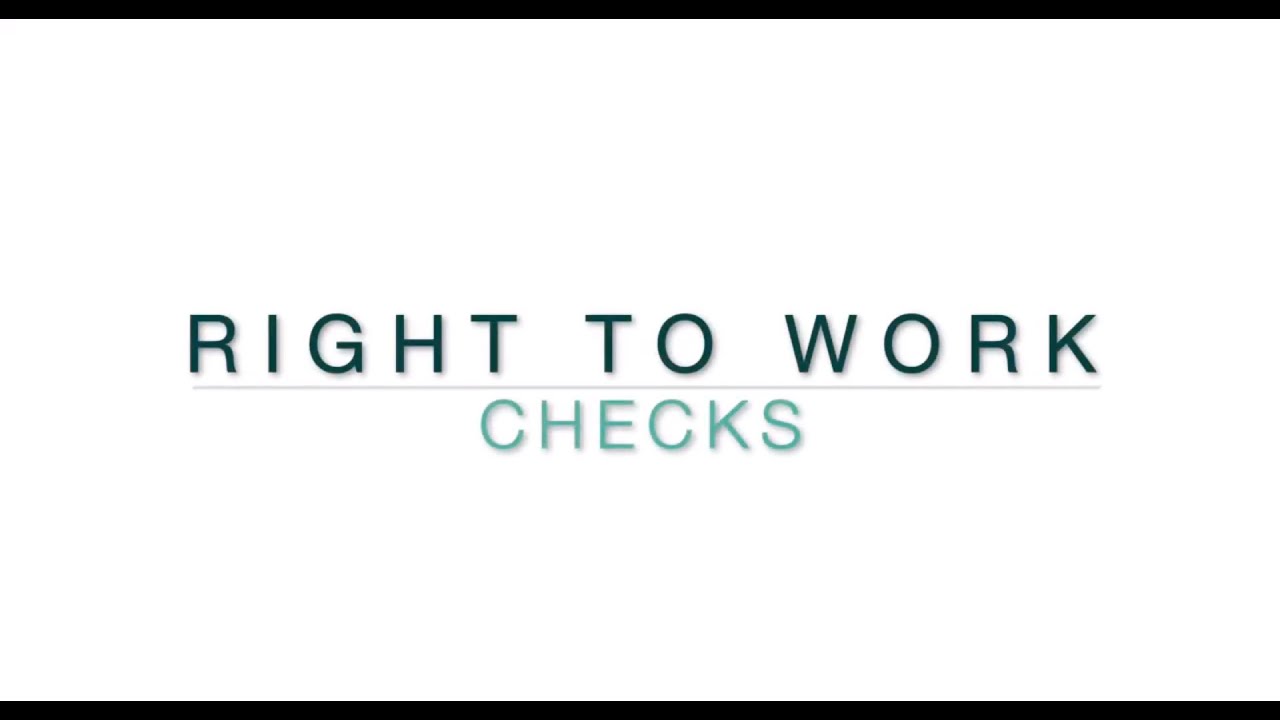How can you ensure that your business is doing everything right when it comes to Right to Work Checks?
If you are new to your role of having been given responsibility for the onboarding of new employees, then find out what you need to do here. If you think you already know and can do the checks standing on your head, then treat this as a refresher and hopefully pick up some of our tips and tools to help you along the way.
Context
If you want to employ someone, you need to gain proof of their right to work in the UK – before they start their employment. You could face a hefty civil penalty if you employ a worker and have not carried out a correct right to work check.
Which checking method should I use?
There a have been quite a few changes for Right to Work checks over the last few years, but essentially you need to carry out one of the following:
- a manual right to work check;
- a right to work check using Identity Document Validation Technology (IDVT) via the services of an Identity Service Provider (IDSP);
- a Home Office online right to work check;
To help you decide which checks to make, this guide will assist you.
UK & Irish citizens can use their passport or passport card to prove their right to work. You can check this manually or using and IDSP.
For nearly all others, you’ll need to check their right to work online.
If you cannot check the applicant’s right to work online using their share code or check the applicant’s original documents use the Home Office Checking Service.
In some circumstances an online check is not possible – Conduct a manual check.
To Do List (A, B or C):
A. Manual Checks
1. Obtain
Gain the original documents from List A or List B of acceptable documents
2. Check
Ensure that the documents are genuine, belong to the person presenting them and that they are allowed to do the type of work you are offering
3. Copy
Make a clear copy of each document in a format which cannot manually be altered and retain the copy securely: electronically or in hardcopy.
B. Identity Document Validation Technology Checks
If you use the services of an IDSP (Identity Service Provider) for digital identity verification, holders of valid British or Irish passports (or Irish passport cards) can demonstrate their right to work using this method.
Remember – There is a cost associated with this type of check – providers can be found here.
C. Online – Home Office Right to Work Checking Service
1. View
Use the Home Office online right to work checking service (the View a job applicant’s right to work details on GOV.UK)
You will need the individual’s share code and their date of birth before you start the online check.
2. Check
Satisfy yourself that any photograph on the online right to work check is that of the individual presenting themselves for work.
3. Copy
Retain a clear copy of the response provided by the online right to work check.
What next?
Record Keeping
Retain a copy of your right to work checks (storing that response securely, electronically or in hardcopy) for the duration of their employment, and for two years afterwards.
You can use our Right to Work Compliance Checklist to record your processes and actions.
Follow Up
If you have correctly carried out your checks, you will have a statutory excuse against liability for a civil penalty if the prospective or existing employee is found working for you illegally. Phew!
However, you need to be aware of the type of excuse you have as this determines how long it lasts for, and if, and when you are required to do a follow-up check.
If the documents that you have checked and copied are from:
- List A: You do not have to conduct any further checks on this individual.
- List B group 1: You should carry out a follow-up when the document evidencing their permission to work expires.
- List B group 2: Carry out a follow-up check when this notice expires six months from the date specified in your Positive Verification Notice.
Useful Links & Documents
The Home Office have now issued a new employers guide on right to work checks, including revised List A and List B documents from 13th March 2023.
Our Employment Details Forms also include the most recent right to work acceptable document lists.
Existing Worker Employment Details Form
New Starter Employment Details Form
We have also put together a Right to Work Checks flowchart which you may also find useful.
Clients are welcome to raise any concerns with their Consultant, who will be pleased to advise you on any element of the issues arising from this newsletter. Please remember we are NOT immigration specialists as that is a very specific area of law, but right to work checks are a requirement for all employers to undertake as part of an employer’s legal employment statutory duties.


